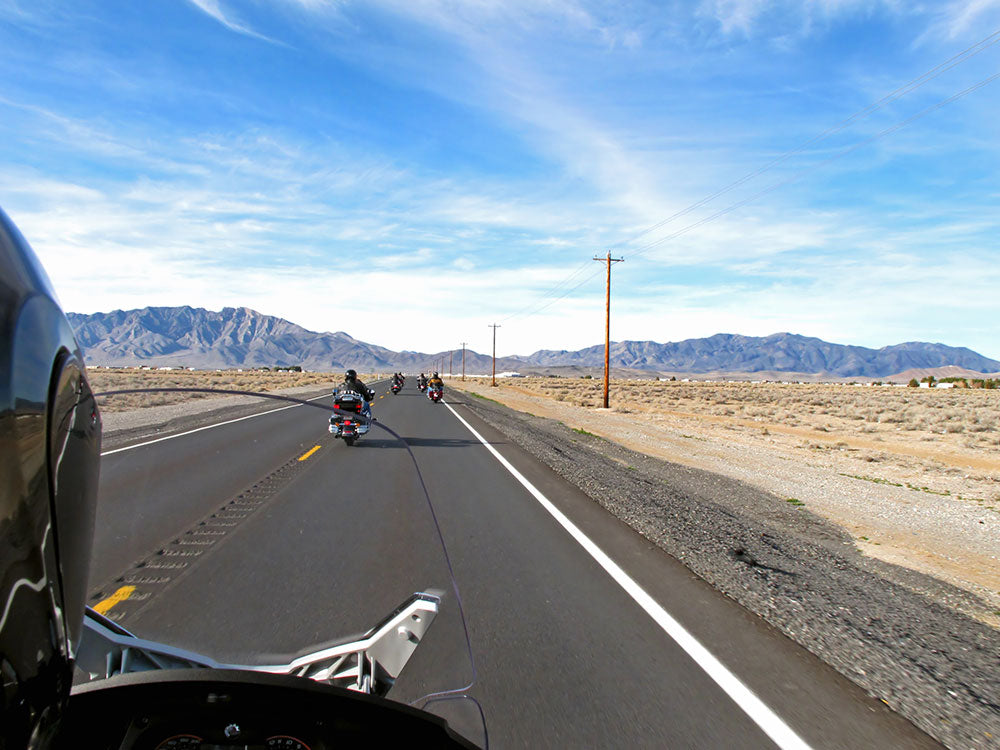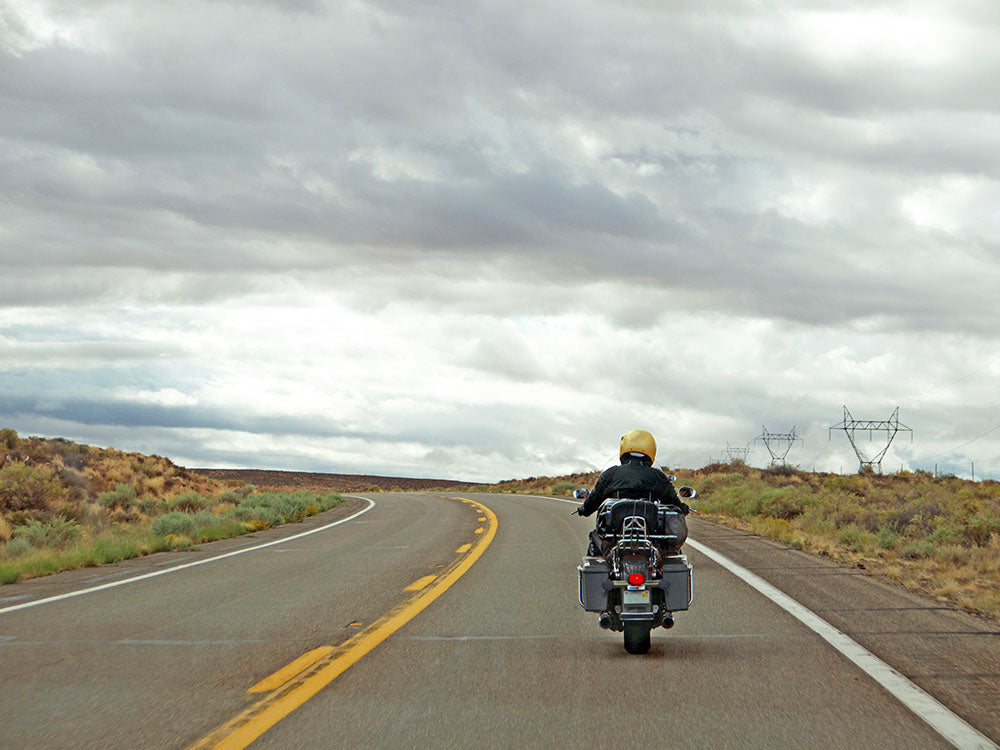Table of Content
1. Introduction
California is a popular state for motorcyclists thanks to there being no shortage of twisty and open roads for you to explore. However, while this state can be a paradise for motorcycles, it can also be an equally hazardous location due to the high frequency of motorcycle accidents. Motorcycle accidents can reach up to tens of thousands every year. A good way to lessen the chances of your motorcycle getting into a collision is to educate yourself on the California motorcycle laws .
For the most part, motorcyclists follow the same traffic laws as car and truck drivers. However, riding a two-wheeled vehicle means there are things you are capable of doing that are just not possible in a four-wheeled vehicle. A motorcycle is much more maneuverable and can reach high speeds quicker. But because of how tempting it is to take advantage of a motorcycle’s full capabilities, motorcyclists can at times be reckless. This is why restrictions specific to motorcycles are put in place. Not to take the fun out of riding one, but to dissuade more earnest riders from putting themselves and other drivers in danger.
Following motorcycle laws may seem like an easy task on paper, but it can be a bit difficult trying to remember what counts as appropriate behavior while on the road. Especially the rules stating what you are allowed to do while on your motorcycle constantly keep changing. This article will help you catch up to speed on the motorcycle laws in California.
2. Registration & Insurance
When you purchase a motorcycle, you will need to register it with the California Department of Motor Vehicles. You will have to provide the vehicle’s title and registration, its out-of-state title, your proof of insurance, and your out-of-state registration, and provide payment for any vehicle-related fees. Otherwise, it is illegal to operate an unregistered motorcycle in California.
In case you get into an accident, you need insurance to help pay for the damages and show proof of liability. You need to apply for insurance that meets the minimum monetary requirements as laid out by the law.
- You will need $5,000 to pay for property damage.
- You will need $15,000 to pay for bodily injury to another individual.
- You will need $30,000 to pay for bodily injury to multiple people.
If you are found to not possess insurance, you may have your motorcycle license suspended for at least a year. You will also not be able to collect any compensation for the damages to your motorcycle regardless of whether you were the cause of an accident or not.
3. Helmet Laws
In California, motorcyclists are required by law to wear a helmet at all times. You may not remove it to make adjustments due to discomfort nor while you are stopped in traffic.
The helmet has to be approved by the U.S. Department of Transportation and has a visible approval sticker with the DOT insignia plastered on the back.
To meet state standards, your helmet has to be able to be fastened securely with straps and fit around your head without it feeling loose or sliding around when moving.
You can wear an earplug in only one ear underneath your helmet so that you can still hear the sounds of car horns, incoming traffic, and other hazards not in your immediate vision.
If you are pulled over for not wearing a helmet, you can potentially be fined up to $250. You can rack up additional charges if you were not wearing a helmet while breaking another traffic law. Your vehicle can even be impounded if you are not careful.
The kind of helmet you are looking for has heavy padding and lining which will protect you from severe damage to your skull, cuts, and lacerations, and hurting your face. Since most accidents occur when you are moving at or less than 30 mph, your helmet has a 69% chance to prevent almost all significant injuries.
4. License Laws
If you are applying for a learner’s permit, you have to at least be over the age of 16. A learner’s permit is valid for one year but comes with several restrictions regarding what you are allowed to do. You cannot carry another passenger, travel out at night, or drive on the freeways. If you are under the age of 21, you have to own a learner’s permit for at least 6 months before being eligible to apply for an official license.
The exam to get a license includes testing your vision, evaluating your riding skills, and checking your knowledge of the rules of the road. If the applicant is still under the age of 21, there is an additional exam to complete: the California Motorcyclist Safety Program training course created by the California Highway Patrol.
There are two types of licenses that you should apply for to be able to ride a motorcycle: an M1 or M2 license. An M1 license allows you to operate any motorized two-wheeled vehicle. An M2 license allows you to ride a motorized bicycle, moped, or motorized scooter.
5. Noise Restriction Laws
To deal with the excess noise that comes out of the exhaust pipes, motorcycles are required to have a muffler attached.
You cannot apply a cutout, bypass, or any other alterations to the muffler as it could negatively impact its ability to lower the volume of your motorcycle. You also cannot make any personal modifications even if you intend to reduce the excess noise from the exhaust pipes.
Depending on what year your motorcycle model was manufactured, the noise from your exhaust pipes will have to be below a certain decibel value. If your motorcycle model was manufactured before 1970, it can only go up to 92 dbA. If your motorcycle model was manufactured after 1985, it can only go up to 80 dbA. You can measure the noise level by standing at a distance of 50 feet away from the centerline of travel.
Local law enforcement is required to give you a ticket immediately if they recognize that you have failed to comply with the motorcycle noise restrictions.
6. Passenger Laws
Your motorcycle must include a passenger seat and footholds that are securely fastened and able to keep your passenger seated for the duration of a ride. Your passenger cannot take his/her feet off the footrests at any point while your motorcycle is moving.
Your passenger is required to wear a helmet that meets the standards of the U.S. Department of Transportation while on a motorcycle at all times. He or she has to follow all of the same helmet laws as you do.
California does not have an age restriction for passengers so it is possible to carry children if you wanted to. A rule to determine whether it is safe for a child to ride is to check if his or her feet can reach down to the footrests. If they cannot, that is a good indication it would be illegal to carry him or her as a passenger. If you have a child as a passenger, make sure he or she is wearing full motorcycle gear to help cover and protect as much skin as possible.
Keep in mind that the added weight of your messenger may affect how you ride your motorcycle. Your motorcycle will be much slower when you are turning, braking, or reacting to hazards. Put a larger buffer space than usual between yourself and any vehicles in front of you to give you extra time to react.
If your passenger refuses to comply with any of these laws, you are not allowed to carry him/her. You will be held responsible by local law enforcement if you have been carrying a non-compliant passenger during an accident.
7. Motorcycle Safety Features
Your motorcycle is required to be outfitted with specific parts to ensure you have good visibility and can warn other vehicles of your presence during any time of the day. Worse comes to worst, you need to have the means to avoid getting into a collision.
You need a headlight to illuminate in front of you during the evening or on cloudy days. You need a brake light to signal other vehicles when you are braking or slowing down. Along with the headlight, the tail light is reflective and helps catch the attention of both incoming and trailing traffic.
To help give you a visual behind you, you are required to have rearview mirrors on both sides of your handles. Do not forget to check over your shoulders to scan areas that are not covered by your rearview mirrors.
You also need to have working turn signals on both the front and back of your ride. This is required for models built and registered from January 1, 1973, and onward. In case one of the turn signal lights goes out, make sure to review the hand signals for switching lanes.
Your handlebars have to be positioned in a way that your arms cannot be elevated 6 feet above your shoulders while still being able to turn the handles fully from side to side.
8. Lane Splitting Laws
California is a unique case as it is the only state that officially declares lane splitting is legal. This means you can maneuver between vehicles on the highways by riding on top of the dotted lines. You can also share the same lane with another motorcycle by riding side-by-side. However, there are still factors you need to keep in mind to practice this safely.
You should never ride 10 mph faster than the other vehicles around you. Never attempt lane splitting when you are going faster than 30 mph. Never try to go around other vehicles by riding on the shoulder lanes.
If you are surrounded by large commercial vehicles such as trucks, wait until they pass and are a good distance away from you before lane splitting.
Above all else, be mindful of your surroundings. Check your rearview mirrors and check over your shoulders fervently before attempting lane splitting. Make sure there are no vehicles in your blind spots.
While lane splitting is allowed, it can be dangerous to get in between other cars. It is suggested you refrain from doing lane splitting regularly to lessen the chances of you getting into an accident.
9. Takeaway
It can be a hassle having to remember and follow California's motorcycle laws. After all, no one likes to be told what to do when it comes to how you are supposed to ride your motorcycle. But you may not always realize how many times they kept you from getting into bad situations.
Whenever you went over a checklist while inspecting the parts of your motorcycle or judged whether it was safe to ride in between lanes to get ahead of other vehicles, that was you deferring to California’s motorcycle laws.
Taking some time to review them and keep up with any changes that have been made in recent years may save you a lot of pain in the future. You never know when thinking about a random law will keep you from getting into an accident or getting pulled over by the Highway Patrol.
After you have cemented your knowledge of California’s motorcycle laws, you might be ready to visit some of the state’s roads and destinations .
10. Sources
- State of California Department of Motor Vehicles - Motorcycle Handbook
- State of California Department of Motor Vehicles - Motorcyclists Guide
- State of California Department of Motor Vehicles - Motorcycle Handbook - License Requirements
- State of California Department of Motor Vehicles - Motorcycle Licenses
- State of California Department of Motor Vehicles - Sample Driver’s License Knowledge Tests













Leave a comment
All comments are moderated before being published.
This site is protected by hCaptcha and the hCaptcha Privacy Policy and Terms of Service apply.